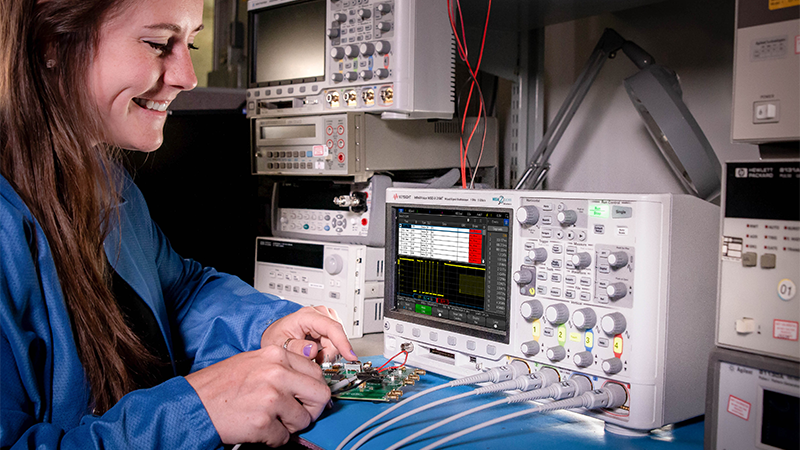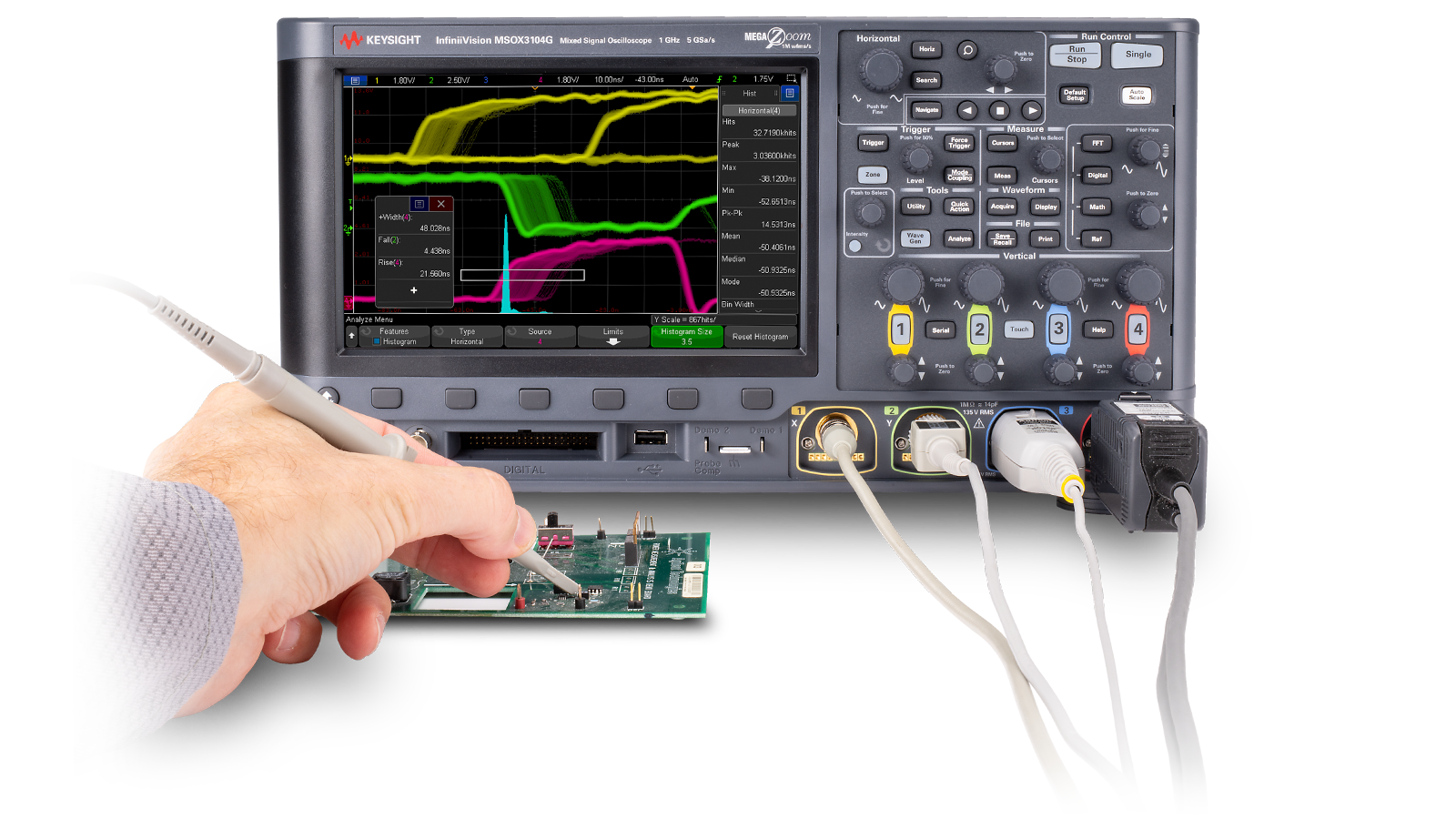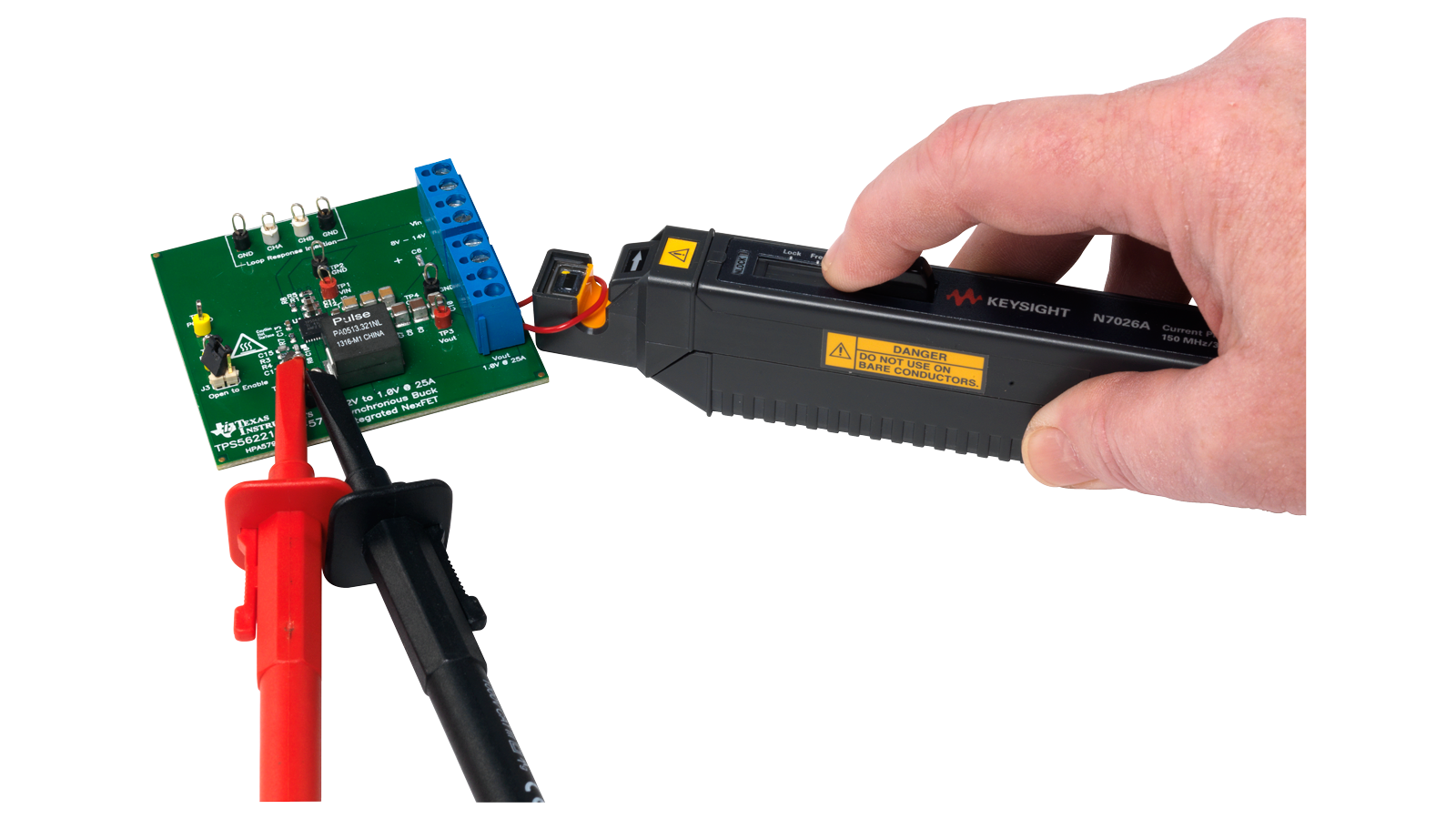What are you looking for?
InfiniiVision Oscilloscopes
Make trusted measurements from basic debugging to deep analysis.

Buy an HD3 and choose your reward
Select two free software applications with your purchase
Measure with Confidence
InfiniiVision digital oscilloscopes capture more, quicker with fast waveform update rates, automated measurements, and up to 7-in-1 instrument integration. An intuitive user interface and high-end software applications place automated measurements and accessible expertise at your fingertips. See why others trust InfiniiVision and learn how you can measure with confidence.
Professional Functionality at Lower Bandwidths
- Increase vertical resolution by four times with a 14-bit analog-to-digital converter (ADC).
- See smaller signals with a 50 µVRMS noise floor.
- Find signal glitches with an uncompromised 1.3 M waveform / second update rate.
- Capture longer time spans at full sample rate with 100 Mpts of deep memory.
- Debug serial buses faster with hardware-based serial trigger and decode.
Find the Series That's Right for You
From basic measurements to deep-analysis, all InfiniiVision digital oscilloscopes are built on the same, proven Keysight technology. This means you have the same UI and measurement performance across the entire family. Simply find the bandwidth that works for you and determine what software capabilities you need.
InfiniiVision Oscilloscope Software
Get the insights you need with application-specific measurement analysis software
Aerospace and Defense
Protocol triggering and decode for MIL-STD 1553 and ARINC 429 serial buses
Embedded Analysis
Protocol triggering and decode for serial buses
Automotive
Test and debug automotive electronic systems
Power Analysis
Automate power supply characterization measurements
Universal Serial Bus — USB
Ensure signal quality for USB designs
Ultimate Software Bundle
Get the most with bundles that include all software applications
PathWave BenchVue Oscilloscope Software
PathWave BenchVue oscilloscope software for PCs makes it easy to connect, control, capture, and view measurement data from your oscilloscopes with no additional programming. The software enables you to do the following:
- Connect and control your oscilloscopes in the cloud
- Log data, screenshots, and system status
- Export measurement data in the desired format
- Make prototypes and create automated custom test sequences
- Save and replicate instrument configurations to repeat results
- Visualize multiple types of instrument measurements simultaneously
Which Oscilloscope Probe Do You Need?
Keysight offers a broad range of voltage, current, and optical probing solutions for InfiniiVision and Infiniium Series oscilloscopes. Check out this guide to see which probe is right for your testing needs.


Make Measurements You Can Trust
Test more efficiently by understanding key oscilloscope specifications and utilizing your instrument to its full capacity. Learn about some of the most critical oscilloscope concepts to find the instrument that's right for you.
Related Uses Cases
Extend Your Capabilities With The Right Tools
Technology is constantly changing. So too are the requirements engineers face. Get more functionality out of your existing hardware today by complementing it with the right accessories to improve productivity and the right Keysight PathWave design and test automation software to accelerate your product development.
Featured Resources
Digital Oscilloscope FAQs
A digital oscilloscope, often referred to as digital storage oscilloscope (DSO), is an electronic test instrument that uses digital signal processing to capture and display varying signal voltages in a digital format. If the scope has the ability to accept digital signals, it is a mixed-signal oscilloscope (MSO).

When selecting a digital oscilloscope, it’s important to consider several key features that will impact its performance and suitability for your specific needs. These features determine the oscilloscope’s ability to accurately capture and analyze electronic signals, ensuring you get reliable and precise measurements.
- Bandwidth: Defines the range of frequencies the oscilloscope can accurately measure. Higher bandwidth allows for capturing higher frequency signals without distortion, which is essential for analyzing fast electronic circuits.
- Number of Channels: The number of separate signals the oscilloscope can measure simultaneously. More channels provide greater flexibility for comparing multiple signals and analyzing complex systems.
- Sample Rate: The number of samples per second the oscilloscope can take. A higher sample rate provides more detailed representations of the signal, ensuring accurate capture of fast-changing events.
- Waveform Update Rate: Refers to how quickly an oscilloscope can acquire and display successive waveforms. A higher update rate allows for better visibility of intermittent or rare signal anomalies, making it easier to capture and analyze transient events.
- Memory Depth: The amount of data the oscilloscope can store for each channel. Greater memory depth allows for longer signal captures at high resolution, which is crucial for detailed analysis of complex waveforms.
Digital oscilloscopes are versatile tools used in various fields. Some common applications include troubleshooting electronic circuits, designing and testing new electronic devices, measuring and analyzing signal integrity, and serving educational purposes in electronics and engineering courses. They are essential for capturing and analyzing waveforms to ensure the proper functioning and performance of electronic systems.
Modern digital oscilloscopes may include features like automated measurements, FFT analysis, serial bus decoding, and advanced triggering options. These advanced features enhance oscilloscopes' functionality, making them powerful tools for a wide range of applications in electronics design, testing, and troubleshooting.
- Automated Measurements: Modern oscilloscopes can automatically measure various parameters of a waveform, such as frequency, amplitude, rise time, fall time, and more. This feature saves time and reduces the potential for human error in manual measurements.
- Fast Fourier transform (FFT): FFT analysis allows the oscilloscope to convert time-domain signals into their frequency-domain components. This is particularly useful for identifying the frequency content of a signal, diagnosing issues like noise and harmonics, and performing spectral analysis.
- Serial Bus Decoding: Many digital oscilloscopes come with built-in capabilities to decode serial communication protocols such as I2C, SPI, UART, CAN, and LIN. This feature simplifies the debugging of embedded systems by displaying the decoded data alongside the waveform.
- Advanced Triggering Options: Advanced triggering allows users to capture specific events within a signal. Triggers can be set based on conditions like pulse width, logic patterns, runt pulses, and more. This helps in isolating and analyzing complex signal behaviors.
Digital oscilloscopes enable engineers to measure and visualize the amplitude of an electrical signal over time. This is also the reason they are generally considered time-domain measurement instruments. However, there are mixed-domain oscilloscopes that provide both time-domain (amplitude vs. time) and frequency-domain (power vs. frequency) measurements.
The precise characterization of waveforms is a critical diagnostic tool in every stage of an electronic product lifecycle, including cutting-edge research, prototyping, design, quality assurance, compliance, maintenance, and calibration.
Explore our oscilloscope bootcamps
Want help or have questions?


























